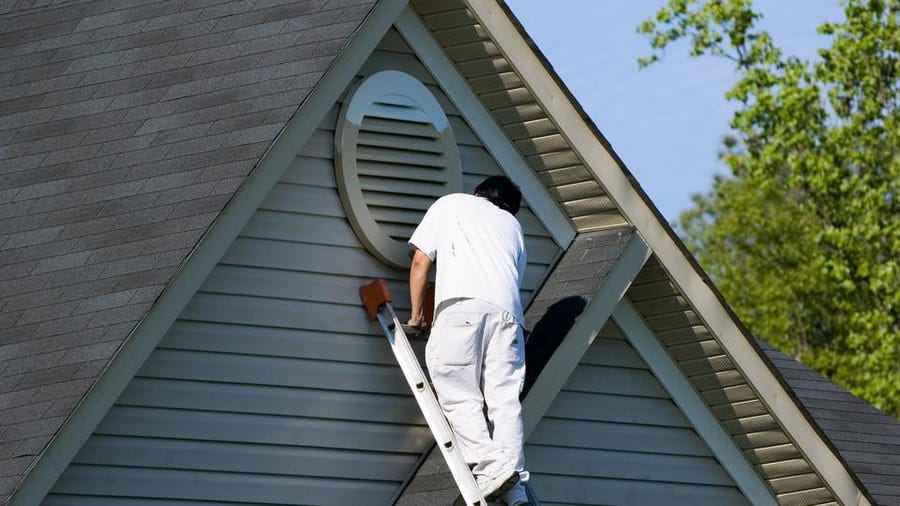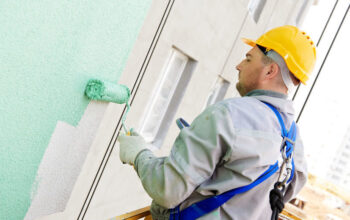Exterior painting is a major home improvement project that requires patience and careful attention. It’s also one of the most costly, so it’s important to get it right.
Professionals knows how to use specific techniques that help them paint quickly with quality results. Let’s take a look at some of these tricks to get you started on your next paint job.
When you are painting the exterior of your home, it is important to select the right color for your property. The wrong color can make your property look tacky or unattractive, which is something you don’t want to happen.
In addition, choosing the right paint can help increase the value of your home and help you sell it faster. In fact, some real estate experts say that neutrals, like gray and beige, are the most popular colors for exterior paint.
The key is to choose a shade that will complement the architectural elements of your home, including brick and stone. You can also consider the colors of your windows, roof, and door.
Pewter Gray is an excellent gray paint shade for homes with decorative exposed brick or stone. It also works well with wood accents and dark blue or brown front doors for a modern exterior palette.
Another great choice for a gray home is alabaster, which is a creamy off-white that complements most existing exterior stone or metal features. It also works well with darker-toned roof shingles, navy shutters, and black trim colors.
One of the most important factors to keep in mind when selecting an exterior paint color is how much light it will receive. In general, lighter paints will allow more sunlight to reach the surface of your home.
In addition, choosing a paint that does not absorb UV rays will help preserve the paint on your property and avoid premature fading or peeling of your paint. This is particularly important if you have a lot of foliage or trees in your landscape, as those plants can absorb UV rays and cause the paint to fade or peel sooner than if it were painted in a lighter color.
Before you paint your home, be sure to test the colors on poster boards and outside in full sun. You should also make sure you use a high-quality paint product to get the most durability and longevity from your painting project.
When painting your home’s exterior, you must take into consideration the materials that make up the paint. The paint you choose has many different components, including pigments that give it its color, additives that offer different properties (like mildew resistance), and resins that bind the paint to the surface.
The paint you use should also be compatible with your surface material. For example, if your house has wood siding or brick, then a paint that is made specifically for these materials will be better than one designed for vinyl.
In addition, the type of paint you use will determine how long it will last and whether it will require repainting. Water-based or oil-based exterior paints are both safe to use on most surfaces.
To prep your home for painting, first ensure that any old paint is removed. This can be done by using a power washer or a manual scraper to remove any loose paint or dirt.
Once the paint is removed, it will be necessary to prime the surface before you can apply a new coat of paint. This will help the paint adhere to your home’s exterior and prevent it from chipping off over time.
Before applying the primer, examine the exterior for any stains or visible wood knots that could interfere with the primer’s effectiveness. These stains can easily be prevented from appearing by applying a stain-blocking primer.



